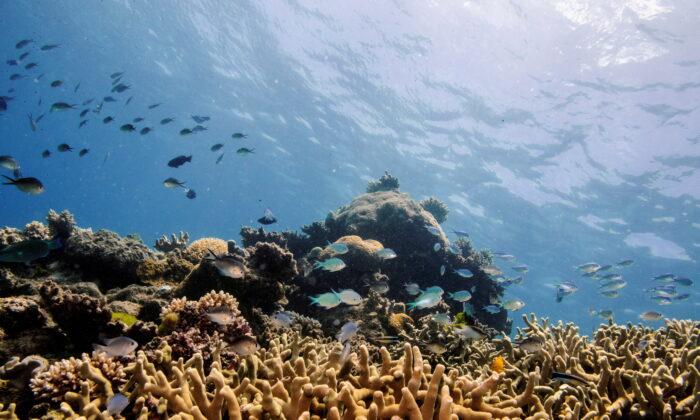An Australian industrial designer and artist has discovered another potential use for 3D printers—saving the world’s reefs—and the art world is supporting his research.
Alex Goad, founder and director of Reef Design Lab, has utilised his knowledge of industrial design and his hobby of scuba diving to create viable marine habitats that can be both a solution to decaying marine ecosystems and beautiful pieces of art. The National Gallery of Victoria’s Sampling the Future exhibition has devoted a room to his latest design, the modular artificial reef system (MARS).
The National Gallery of Victoria is not the first, with Goad’s designs being added to the permanent collections of the Museum of Modern Art in New York and the Helsinki Design Museum.
Goad noted that a big part of his work comes from communicating the need for attention to be given to the world’s oceans and how we’re going to be building in the future.
“I do think a big part of this work is communication so we can start to influence change, different ways of doing things,” he said. “And a great way to do that is through culture, to engage with museums. It’s one of the best communication tools you could have.”
The initial designs for MARS were for coral transplantation and reef restoration in tropical waters, whilst the most recent version has been designed for use in cool and temperate environments, such as coastal Victoria. The modules mimic natural habitats and have been designed to provide appropriate surface geometry for the growth of oysters and mussels. Ecological contexts and applications have also been considered for their surface patterns.
The foundation of corals are skeletons made of calcium carbonate, layered by stony corals. For this skeleton to build up and form an ideal habitat for a flourishing reef can take centuries. However, the MARS system is an artificial coral skeleton that can significantly reduce the time it takes to build that foundation.
According to Reef Design Lab, each unit has specially designed surface geometry to mimic the natural habit and encourage natural recruitment of juvenile coral and make it easier for transplanted coral to take hold. Using a slip casting process, the surface of the seawall panels are 3D printed and moulded in ceramic.
Once implemented, the system provides a permanent rigid structure for transplanting coral and acts as habitat protection for other species in the area. The complex network formed by the modules interrupts water flow, trapping food particles and creating a refuge for small animals.
“In these highly degraded, completely changed unnatural environments, we are using these tools and methodologies to try and get back a kind of hybrid between what naturally would grow and what we have to implement, as human-made structure, to try to improve the ecology,” Goad said.
“But if we are going to be proposing these new and ecologically designed structures, we need to know they work and that they’re not going to be a haven for invasive species, for example.”
MARS hasn’t yet been used in Australia, but another Goad invention is not hard to find in Sydney.
Goad designed the Living Seawall program managed by the Sydney Institute of Marine Sciences (SIMS), which was a finalist in the 2021 Royal Foundation of The Duke and Duchess of Cambridge Earthshot awards.
Seawalls are constantly present on the coasts but are usually flat and void of crevices and therefore minimises the potential for colonising organisms. However, Goad and the RDL design team’s Living Seawalls are 3D printed modular habitat panels that can be fitted to existing seawalls to create complex microhabitats such as crevices and rock pools.
The size and shapes of the crevices and patterns on the panels are taken from actual measurements on natural rocky shorelines to encourage the growth of natural habitat and improve the water quality.
SIMS has reported an increase of up to 36 percent in fish, algae, and invertebrate numbers in areas containing Living Seawalls.
Goad’s work will be on display at the National Gallery of Victoria until Feb. 6 as part of the Sampling the Future exhibition.





